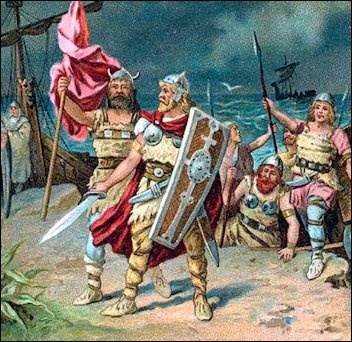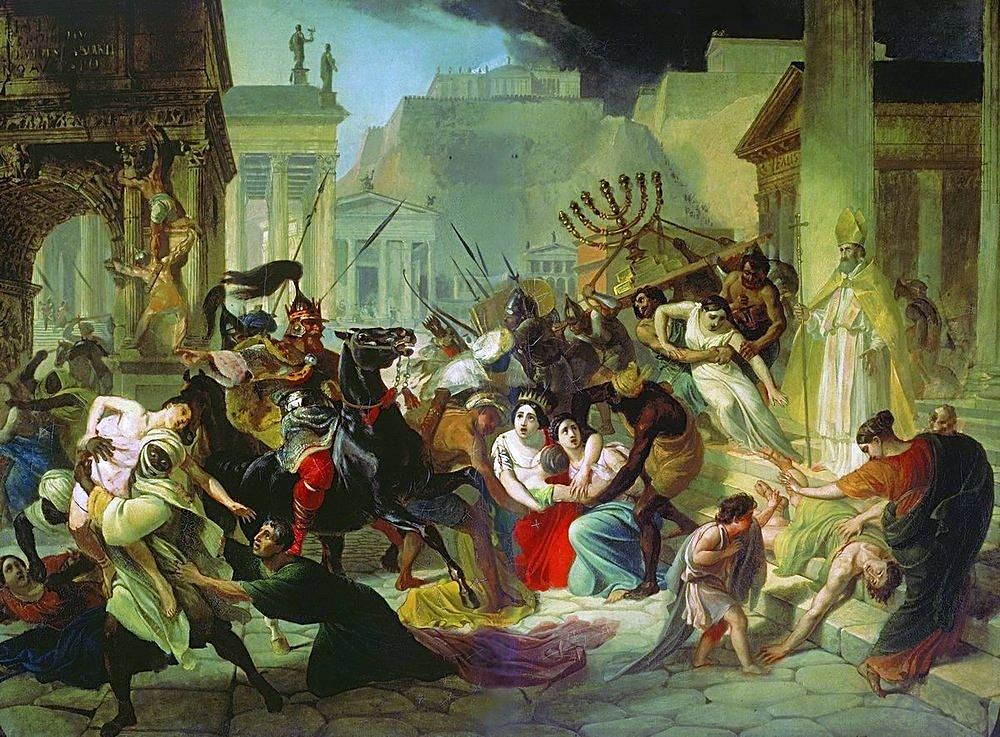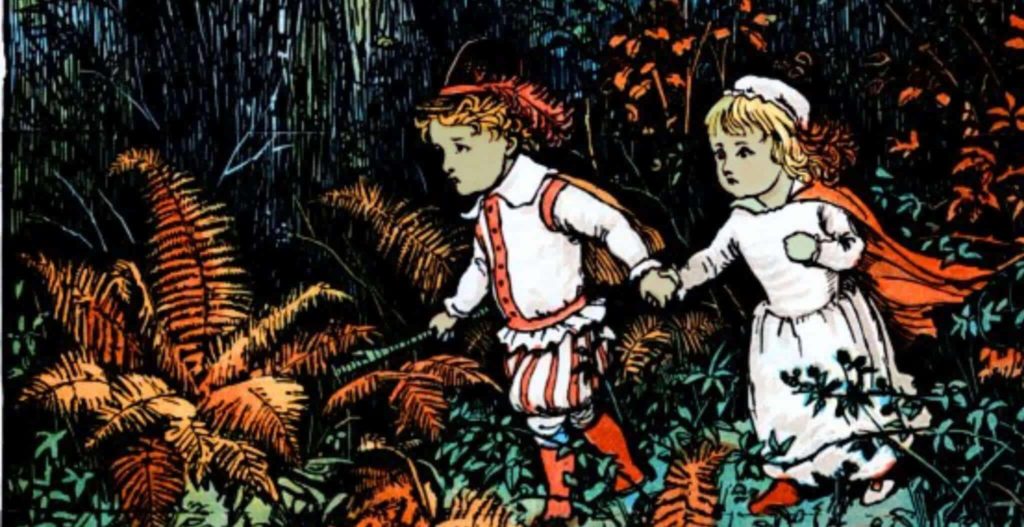Vandalism–the word has an immediate negative connotation in the minds of most, and for good reason. Vandalism can destroy buildings, personal property, and even art.
But in ancient times, the word meant something totally different. The Vandals were a Germanic tribe that rose from obscurity to a power large enough to take over ancient Rome for a time in the 5th century.
Emerging from the heart of what we now know as Poland, the Vandals weren’t simply conquerors. They were expert horsemen who migrated far across the European continent before eventually disappearing from history.
We don’t have many records of these mysterious people. However, what we do have paints a fascinating picture of the tribe once known as the Vandals.

Who Were the Vandals?
Before the Migration Period, not much is known about the Vandals. History suffers from a lack of texts from the Vandals themselves. Therefore, we have to base what we know from other sources.
They are first mentioned by Pliny the Elder in his work Natural History. But only briefly when he writes of a people known as the Vandili among the Germanic tribes.
Roman Historian Tacitus also mentions Vandili, but like Pliny the Elder, only uses the term when describing some of the oldest Germanic populations. The Vandals will appear late in Roman sources as well, where they are described as part of the conflicts along the Danube frontier.
The well-recorded part of the story of the Vandals starts like many other Germanic tribes of the time. They were one of many caught up in the Migration period of history, which occurred between 300-800 AD. The catalysts for these migrations were varied–population pressure, climate changes, and invasions to name a few.
For the Vandals, the reason behind their flight from their homeland of what is now Scandinavia was escaping the mighty Huns. Like many others, they made their way toward Rome. The Roman Empire was feeling the stress of the arrival of all these new barbarian tribes.
As the Vandals moved towards Roman territories, they soon crossed the Rhine River and made their way into the Roman territory of Gaul. At the time, this invasion wasn’t at the forefront of Roman leader’s minds.
This was because the current Roman Emperor, Honorius, had an uprising on his hands. One of his generals had taken control of Britain and dubbed himself Emperor Constantine III.
The Vandals in Spain and North Africa
At the time, the Vandals were split into two main factions: the Siling and the Hasdingi.
- Silingi Vandals- This faction of the Vandals tribe would be the one to settle in Baetica.
- Hasdingi Vandals: The Hasdingi Vandals were part of the tribe that settled in Gallaecia.
After Gaul, the Vandals stayed in what is now modern-day Spain starting in 409. They established a place in the Iberian Peninsula but were soon feeling the pressure of both the Roman Empire and another Germanic people, the Visigoths.
In 417, the Silingi portion of the Vandal tribe suffered massive losses fighting the Visigoths, who had been sponsored by the Roman Empire. They willingly subjected themselves to the rule of the Hasdingi Vandals and their leader Gunderic.
Ten years later, Gunderic’s brother, Gaiseric would succeed him. It was under the leadership of Gaiseric that the Vandals would leave Spain and make their way towards Northern Africa. There, they would experience their greatest successes.
At first, the Vandals were considered a Roman federate once they took their place in Northern Africa. This meant that they were technically under Roman rule.
It only took four years for Gaiseric to grow tired of this arrangement. He decided to lead his people to overthrow these Roman rulers. In the process, they managed to capture Carthage and establish an independent autocracy.
It was there, firmly established in Northern Africa, that the Vandals would set the stage for their sacking of Rome.
The Vandals’ Sack of Rome
With his kingdom in Northern Africa firmly in hand, Gaiseric and the Vandals captured a number of Roman territories in quick succession. These territories included Corsica, Sicily, Sardinia, Malta, and a Mediterranean archipelago known as the Balearic Islands.
The Romans weren’t taking this lying down, though. They mounted several attempts to retake their territories, including Northern Africa.
The barbarian Vandals held their own. They fended off every one of these attacks, continuing their unstoppable march towards Rome.
In 455, still under the rule of Gaiseric, the Vandals sacked the city of Rome. It was here that their names would become synonymous with destruction.
For fourteen long days, the Vandals plundered ancient Rome. Historians would write of this time as one of violence and chaos, painting the Vandals as simple barbarians.
It was said that the Vandals destroyed Roman artwork and structures. They laid waste to the once world-renowned city.

As it turns out, history hasn’t been quite fair to the Vandals. In modern times, the Vandals have somewhat been redeemed of this horrible reputation. Contrary to what Renaissance historians wrote, the Vandals were actually rather merciful in their takeover of Rome.
They allowed most of the city’s inhabitants to keep their lives. They chose not to burn the buildings of the city to the ground. Because of this, much of Roman culture endured the sacking.
King Gaiseric, conqueror of Rome, died of natural causes in 478. Gaiseric had led the barbarian tribe to monumental victories, and once he passed, he was succeeded by his son, Huneric.
Unfortunately, Huneric would only rule 10 years before his death in 484. It became clear that without the steady hand of Gaiseric, the Vandals were not the power they once were.
But, for a time, the Vandals were formidable enough to gain control of one of the most powerful empires in the world. Even if their history has faded somewhat into obscurity, the legacy of their name and the destruction it’s associated with lives on.
References
“Vandal, Germanic People”
https://www.britannica.com/topic/Vandal-Germanic-people
“Vandals”

